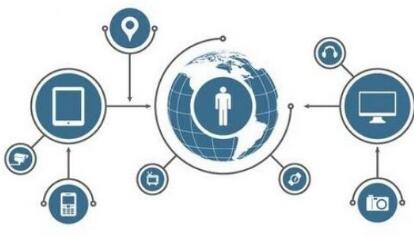ã€New concept of China Instrument Network Instrumentation】 On the afternoon of December 20th, the “Mobile Internet of Things Industry Development†was jointly sponsored by the School of Management of Fudan University, the Social Innovation Research Base of Shanghai Industrial Structure Adjustment, and the Research Center for Enterprise Development and Management Innovation of Fudan University. In 2017), the research group of the School of Management of Fudan University released the “Mobile Internet of Things (2017) Industry Research Report†(hereinafter referred to as “Reportâ€).
(Image from the Internet, invaded)
The "Report" pointed out that by 2020, the total market size of China's mobile Internet of Things business can reach 1.76 trillion yuan, and the market's average compound annual growth rate will reach 15%. Location-aware networks, mobile communication networks, and location computing networks will together constitute the three major infrastructures for mobile IoT development. The development of these three networks will determine the future of the mobile IoT industry.
According to the research of the research group, the relevant industries supported by the GNSS (Global Navigation Satellite Positioning System) technology have developed particularly rapidly and have become the main force in the mobile Internet of Things market. It is estimated that by 2025, the global GNSS technology will support more than 8 billion mobile IoT devices.
In the Chinese market, the size of the entire mobile Internet market will reach approximately 1 trillion yuan in 2017. By 2020, this figure will further increase to 1.76 trillion yuan. By 2018-2020, the China Mobile Internet of Things industry will welcome Come to the critical period of maturity.
According to statistics, the market demand for “Smart City†related projects accounts for 20% of the total demand for mobile Internet of Things projects. With the huge demand, the total investment of smart cities in the world will reach 120 billion US dollars in 2020. In terms of consumer-grade terminals, the development of the Internet of Vehicles market will also enter the fast lane. It is predicted that the scale of China's Internet of Vehicles market will reach 33.8 billion U.S. dollars by 2020, and it will rise to 216.2 billion U.S. dollars by 2025.
It is particularly critical to improve the level of development of the three infrastructures: location-aware networks, mobile communication networks and location computing networks.
Liu Mingyu, the head of the research group and associate professor of the Department of Industrial Economics at Fudan University, said that in the era of mobile Internet of things, humans no longer directly control machine equipment, but instead the mobile terminal makes autonomous decisions based on the mapping of the real world in the system, so they must be provided Accurate positioning support. However, GPS technology that is familiar to everyone now has a positioning error of 10 meters or even more than 20 meters. "It cannot meet the requirements of terminals for future driverless cars and smart wearable devices."
It is worth mentioning that Chihiro Location Network Co., Ltd., jointly established by China North Industries Group Corporation and Alibaba Group in 2015, has now established the world's largest single-satellite ground augmentation system. With more than 1800 ground-based augmentation stations and self-developed positioning algorithms throughout the country, the company can use the Internet technology to perform big data calculations to provide users throughout the country with accurate positioning and extension services. According to the plan, Chihiro’s location will achieve “centimeter-level†positioning services by 2018.
(Original title: "Report" said that China's mobile Internet of Things business scale will reach 1.76 trillion yuan in three years)
Sodium Hydrosulfite
Sodium hydrosulfite is widely used in the textile industry for reducing dyeing, reducing cleaning, printing and decoloring, and for bleaching silk, wool, nylon and other fabrics. Because it does not contain heavy metals, the bleached fabric has bright color and is not easy to fade. In terms of various substances, sodium silicate can also be used for food bleaching, such as gelatin, sucrose, honey, etc., soap, animal (vegetable) oil, bamboo, porcelain clay, etc. Sodium hydroxide can also be used in organic synthesis, such as reducing agent or bleaching agent in the production of dyes and medicines. It is the most suitable bleaching agent for wood pulp and papermaking. Moreover, many heavy metal ions such as Pb2+ and Bi3+ can be reduced to metals in water treatment and pollution control, and it can also be used to preserve food and fruits. However, due to the many dangers of sosso, many of its uses tend to be replaced by thiourea dioxide, which is safer and easier to store and transport.
Sodium Hydrosulfite,Sodium Hydrosulfite 88%, Sodium Hydrosulfite 90%
HENAN JINHE INDUSTRY CO.,LTD , https://www.hnchromiumoxidegreen.com
